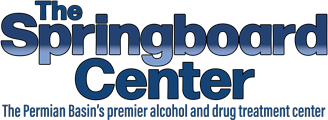 Teen substance use has reached crisis levels across America.
Teen substance use has reached crisis levels across America.
Parents watch helplessly as their children face pressures they never experienced growing up. The digital age brings new challenges, making it harder to monitor what teens encounter daily. Understanding what is the number one drug used by teens today gives parents the knowledge they need to protect their children.
The substances teens choose most often might not be what you expect. This information can help families recognize warning signs and take action before experimentation becomes addiction.
Please note that the Springboard Center only works with 18+ patients. We are happy to support you in finding resources to best support your loved ones who are under 18.
What Is the Number One Drug Used by Teens? According to Recent Studies
Current research from the National Institute on Drug Abuse shows clear patterns in teenage substance abuse. The data reveals which substances teens use most frequently and how these trends have shifted over recent years. Parents consistently ask what is the number one drug used by teens, and the statistics provide definitive answers. Drug trends in adolescents continue evolving as new substances emerge and legal changes affect teen perceptions of various drugs.
Alcohol Remains the Most Commonly Used Substance
Alcohol continues to be the answer to what is the number one drug used by teens across most studies. This number has remained relatively stable despite increased awareness efforts.
Teens often view alcohol as less dangerous than other substances. Many see it as a normal part of growing up because adults use it legally. Social media shows glamorized drinking culture, making it seem appealing and harmless.
Teen parties frequently center around alcohol consumption, creating social pressure to participate. Alcohol consumption in teens has become normalized in many communities despite serious health and legal risk.
The accessibility of alcohol makes it particularly problematic. Most teens can find alcohol in their own homes or through older friends. Unlike other substances, alcohol doesn’t require special connections or knowledge to obtain.
Marijuana Shows Increasing Usage Rates Among Adolescents
Marijuana use among adolescents has steadily increased as laws change across the country. Recent studies show that 35% of high school seniors used marijuana in the past year. This represents a significant increase from previous decades.
Legal changes in many states have shifted teen perceptions about marijuana safety. Many teens believe marijuana is completely harmless because it’s legal for adults in their area. Social media influencers often promote marijuana use as natural and beneficial.
The potency of today’s marijuana products far exceeds what previous generations used. Modern marijuana contains much higher levels of THC, the psychoactive compound that creates the “high” feeling. This increased potency creates higher addiction risks and more severe side effects.
Nicotine and Vaping Products Surge in Popularity
Vaping has exploded among teenagers. These products often contain nicotine, making them highly addictive. The appealing flavors and discreet nature make vaping particularly attractive to teens. Many of these devices now contain synthetic drugs and teens don’t realize the dangerous chemicals they’re inhaling beyond just nicotine!
Marketing often emphasizes flavors and social aspects rather than addiction risks. The devices are small and produce less obvious odors than traditional cigarettes.
Vaping companies have specifically targeted younger users through social media marketing. The products come in flavors like bubble gum and cotton candy that clearly appeal to younger users. This targeted marketing has created a new generation of nicotine addicts.
Prescription Drug Misuse Creates Growing Concerns
Teens often believe prescription drugs are safer than illegal substances.
Many teens get prescription drugs from family medicine cabinets. Others buy them from classmates who have legitimate prescriptions. The ease of access makes prescription drug abuse particularly concerning for parents. Families dealing with this issue often benefit from comprehensive family programs that address the entire household’s needs.
Teens often mix prescription drugs with alcohol or other substances, creating dangerous combinations. They may not understand that prescription medications can be just as deadly as illegal drugs when misused.
Why Teens Turn to Substance Use in Today’s Environment

Understanding the reasons behind teenage substance abuse helps parents address root causes rather than just symptoms.
Social Media Pressure and Online Influence
Social media creates constant pressure for teens to appear popular and carefree. Posts showing parties and substance use make these activities seem normal and expected. Teens feel pressure to participate to fit in with their online image.
Influencers and celebrities often glamorize substance use through their posts. Young people see their role models using substances and assume it’s acceptable behavior. The curated nature of social media hides the negative consequences of substance use.
Online communities can normalize dangerous behaviors and provide information about obtaining substances. Teens can find detailed instructions about using various substances and connect with others who share these interests.
Academic Stress and Performance Anxiety
Today’s teens face unprecedented academic pressure. College admission has become increasingly competitive, creating anxiety about grades and test scores. Some teens turn to substances as a way to cope with this constant stress. When academic performance begins suffering due to substance use, intensive outpatient programs can help teens maintain their education while receiving treatment.
The pressure to excel in multiple areas – academics, sports, extracurriculars – leaves little time for healthy stress management. Teens may use substances as a quick way to relax or escape from overwhelming demands.
Many teens use stimulants like Adderall to help them study longer or perform better academically. This misuse of prescription medications can lead to dependency and serious health problems.
Mental Health Struggles and Self-Medication
Teen mental health issues have increased dramatically in recent years. Depression, anxiety, and other conditions affect millions of teenagers. Some turn to substances as a way to self-medicate these underlying problems.
The substance use can temporarily mask symptoms of mental health conditions. Teens may not realize they’re creating additional problems while trying to solve existing ones. This self-medication often leads to dual diagnosis situations requiring specialized treatment. When mental health issues combine with substance use, teen drug addiction becomes more complex and requires comprehensive care addressing both conditions.
The stigma around mental health still prevents many teens from seeking appropriate help. They may see substance use as easier than admitting they need professional support for mental health issues.
Peer Pressure and Social Acceptance Needs
The teenage years are crucial for social development and acceptance. Teens desperately want to fit in with their peer groups. Substance use often becomes a way to gain social acceptance or avoid rejection.
Friend groups that use substances create pressure for all members to participate. Teens may start using substances they never intended to try just to maintain friendships. The fear of being left out can override good judgment about substance use.
Social situations often revolve around substance use, making it difficult for teens to participate without using. Parties, gatherings, and even casual hangouts may include drinking or drug use as the main activity.
How Common Drugs Used by Teens Affect Developing Brains
The teenage brain continues developing until around age 25. Substance use during this critical period can cause lasting damage that affects learning, memory, and decision-making abilities. When teens develop substance use disorders, professional medical detox becomes essential for safe withdrawal management.
Alcohol’s Impact on Cognitive Development
Alcohol significantly disrupts brain development in teenagers. The adolescent brain is particularly vulnerable to alcohol’s toxic effects. Regular drinking can cause permanent changes in brain structure and function.
Alcohol affects the hippocampus, the brain region responsible for learning and memory. Teens who drink regularly often struggle with academic performance and memory problems. These effects can persist long after they stop drinking.
The prefrontal cortex, which controls decision-making and impulse control, is also damaged by alcohol use. This can lead to poor judgment and risky behavior that extends beyond substance use.
Marijuana’s Effects on Memory and Learning
Marijuana use during adolescence can cause lasting changes in brain development. The active ingredient THC affects areas of the brain responsible for memory, attention, and learning. These changes can persist even after teens stop using marijuana.
Teens who use marijuana regularly have reduced IQ scores compared to non-users. Memory problems and difficulty concentrating become common issues. These cognitive effects can impact academic performance and future opportunities.
The earlier teens start using marijuana, the more severe these effects become. Starting marijuana use before age 16 creates higher risks for lasting brain damage and cognitive problems.
Prescription Drug Dangers for Adolescent Health
Prescription drug misuse can cause serious health problems in developing teens. Opioid painkillers can quickly lead to addiction and overdose. Stimulants like Adderall can cause heart problems and mental health issues.
Benzodiazepines, commonly prescribed for anxiety, can cause memory problems and increase depression risk. When teens misuse these medications, they face all the same risks as adult users plus additional dangers from their developing brains.
Mixing prescription drugs with alcohol or other substances creates extremely dangerous situations. Teens may not understand these interaction risks, leading to accidental overdoses and other serious consequences.
Vaping Products and Nicotine Addiction Risks
Nicotine is particularly addictive for teenagers due to their developing brains. The adolescent brain forms nicotine addiction faster and more intensely than adult brains. This makes it extremely difficult for teens to quit vaping once they start.
Vaping can cause lung damage and respiratory problems in teens. The long-term health effects are still being studied, but early research suggests significant risks. The high nicotine content in many vaping products increases addiction potential.
Teens who vape are more likely to transition to traditional cigarettes and other substances. Vaping often serves as a gateway to more dangerous forms of substance use.
When Parents Should Be Most Concerned About Teen Drug Use

Certain warning signs require immediate attention. Understanding what is the number one drug used by teens helps parents recognize specific symptoms and behaviors associated with the most common substances.
Warning Signs That Require Immediate Attention
Physical symptoms like bloodshot eyes, unusual odors, or changes in coordination indicate possible substance use. Behavioral changes such as secrecy, lying, or aggression may signal problems. Academic performance drops often accompany substance use issues.
Money problems or missing items from the home may indicate teens are selling belongings to buy substances. Finding paraphernalia like vaping devices, pills, or alcohol in teen belongings requires immediate action. When families in the Permian Basin region face these challenges, seeking help from our Texas recovery center can provide the structured support teens need.
Dramatic personality changes or withdrawal from family activities often indicate substance use problems. Teens who suddenly change friend groups or become secretive about activities may be hiding substance use.
Situations That Increase Likelihood of Drug Use
Stressful life events like divorce, death, or major changes increase teen substance use risk. Academic pressures during exam periods or college applications create vulnerability. Social situations like parties or gatherings often involve peer pressure to use substances.
Early identification of these risk factors is crucial for effective substance abuse prevention for teens and can help families intervene before problems develop.
Unsupervised time, especially during summer breaks or after school, creates opportunities for substance use. Teens with too much free time and too little supervision are more likely to experiment with substances.
Behavioral Changes That Signal Substance Abuse Problems
Sleep pattern changes, appetite changes, or hygiene neglect may indicate substance use problems. Teens who suddenly need more money or become secretive about spending may be buying substances.
Relationship changes with family and old friends often accompany substance use. Teens may become hostile toward family members or abandon longtime friendships for new relationships centered around substance use.
When these behavioral changes become severe, seeking help from The Springboard Center can provide families with the professional guidance they need.
Find Hope and Healing for Your Teen at The Springboard Center
Teenage substance abuse doesn’t have to destroy your family’s future. Early intervention and professional treatment can help teens overcome addiction and build healthy, fulfilling lives.
The Springboard Center understands the unique challenges facing teens and families dealing with substance abuse. Take the first step toward healing and contact us today to learn about our programs and how we can help your family.
We are here to guide you through every step of the recovery process!




